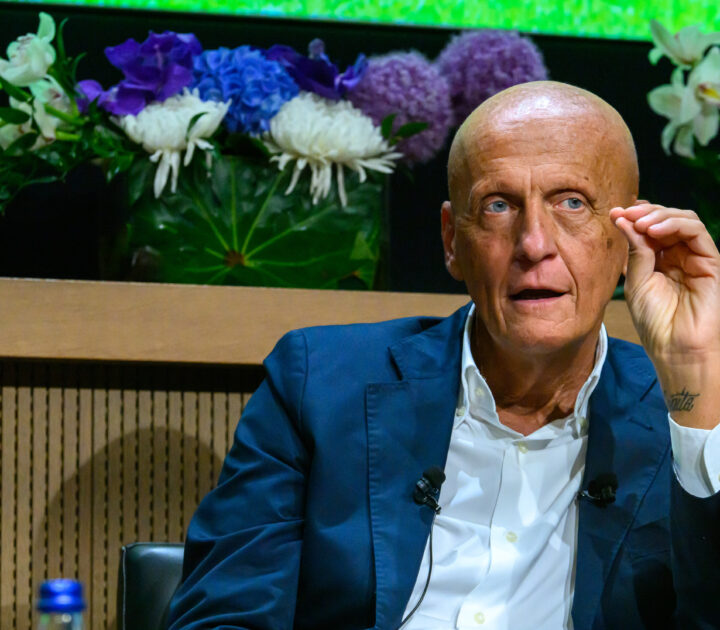
Top leadership qualities in today’s unpredictable world
For the foreseeable future, the world won’t be a stable or predictable place like it used to be.
Think about the countries which were touted a few years ago as the future of growth for global business but are now stumbling – like Brazil or China which now offer something much more complicated than straightforward profitable expansion. Even commodities such as oil, which now costs a fraction of the price it commanded a few years ago, can’t be relied on.
VUCA (volatile, uncertain, complex, and ambiguous) is the new normal and will stay that way.
Another striking change is that “global competition,” once a phrase that meant the United States, Japan, and Europe, now refers to a genuinely global fight. Businesses need to be as aware of competitors based in Vietnam and Thailand as they are of those in Silicon Valley and Frankfurt.
Companies are increasingly ignoring traditional competitive borders. Thanks to the “digital vortex” everyone is vulnerable. Digital disruption is like a vortex in that it exerts a rotational force that draws everything that surrounds it into its center. A company can be on the periphery one moment, and then sucked into the middle the next. There is no uniform or predictable path for industries in the digital vortex.
Taken together this means that executives need to ask themselves one key question: how can I lead in a world like this?
- Think big picture. Get out of your comfort zone and think beyond conventional frameworks. This means anticipating changes in your competitive environment, including the possibility that you are now operating in a different industry than the one you expected; understanding the new market dynamics around competition; deciding on your new business model; leveraging the experience of different generations; and embracing curiosity and diversity.
- Innovate broadly. And I’m not just talking about product innovation. Product innovation is fine. But it’s just one note in a whole piano of possible innovations. If your company is serious about differentiating itself from the competition, then it must innovate on all dimensions all the time: think about new processes and a new business model. After all, your product is just one part of your brand.
- Embrace diversity. Different minds are better than more of the same. Better agility requires organizations to find a way to leverage the best talents, wherever they are, for different perspectives. This means not just diversity of genders and nationalities, but things like diversity of experiences, generations, and opinions.
- Communicate, communicate, communicate. Have multiple modes and styles for better global communication, and ensure that you act with a global mindset. Steps along this path include speaking different languages but also developing sensitivity, empathy, and open-mindedness; behaving at all times with respect for others; and having both a willingness to experiment and a cosmopolitan sense of curiosity.
- Adapt your leadership style. The nature of leadership is evolving. We are moving from authority to trust; from hierarchy to networking; from decision-making to inspiration; and from power to self-awareness. Learning how to manage your behaviors is central to developing leadership fit for our VUCA future.
So to lead in world where you never know what is going to be around the corner, being at the top is no longer about ruling with an iron fist. Leaders are there to inspire, not to make every decision. They have to create the vision and provide the conditions needed for their team to perform and be ready for anything.
Do you have what it takes?
Dominique Turpin is the President of IMD and the Nestlé Professor.
Learn how to develop your leadership skills with the IMD Global Leader Index, a free tool that allows managers to assess and benchmark their leadership skills, or at IMD’s upcoming program Orchestrating Winning Performance (OWP).
Research Information & Knowledge Hub for additional information on IMD publications
In that article I explained that modern safety leaders need more than just technical skills to survive in a VUCA (Volatile, Uncertain, Complex & Am...
Many executives say they don’t have time for mindfulness practices, such as daily meditation. An alternative is micro-presence: weaving moments of ...
Technological innovation, advances in remote work, and reshaped post-pandemic priorities have led to companies hiring fractional leaders, or part-t...
in Safety and Health Practitioner 29 January 2019
Research Information & Knowledge Hub for additional information on IMD publications
Research Information & Knowledge Hub for additional information on IMD publications
Research Information & Knowledge Hub for additional information on IMD publications
Research Information & Knowledge Hub for additional information on IMD publications
Research Information & Knowledge Hub for additional information on IMD publications
Research Information & Knowledge Hub for additional information on IMD publications
in I by IMD 5 July 2024
Research Information & Knowledge Hub for additional information on IMD publications
in HBR.org 2 July 2024
Research Information & Knowledge Hub for additional information on IMD publications
in I by IMD 28 June 2024
Research Information & Knowledge Hub for additional information on IMD publications
Research Information & Knowledge Hub for additional information on IMD publications






